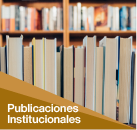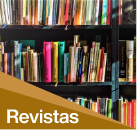Mostrar el registro sencillo del ítem
Lectura de Señas de la Naturaleza para la Estimulación en la Lectura y la Identidad cultural en los niños de primer grado
| dc.contributor.advisor | Amable Pinares, Clotilde Natividad | |
| dc.contributor.author | Medina Cuba, Franklin | es_PE |
| dc.date.accessioned | 2025-06-02T04:14:29Z | |
| dc.date.available | 2025-06-02T04:14:29Z | |
| dc.date.issued | 2024-05-17 | |
| dc.identifier.uri | http://repositorio.pukllasunchis.org/xmlui/handle/PUK/133 | |
| dc.description.abstract | Este documento aborda el tema de los saberes ancestrales de las “señas” de la naturaleza en la Comunidad Campesina de Simataucca y tiene como objetivo proponer estrategias y un material educativo que permita integrar los saberes ancestrales de las señas de la naturaleza al proceso educativo de EIB de los Niños y Niñas de 1°. 2.° y 3° grado en la I.E. Nº 50920 de la comunidad de Simataucca, distrito de Chinchero, provincia de Urubamba, región de Cusco, durante el año 2022. ¿Qué son las señas? En las comunidades andinas por lo general se mira a algunas plantas o gestos de los animales para saber en qué momento sembrar o realizar alguna actividad. A esos gestos de la naturaleza se le llama señas: cuando miramos la flor del Puya Puya, si ésta florece color blanco, significa que no van a haber muchas lluvias o se van a presentar inconvenientes para sembrar. Para hacer esta investigación se realizaron entrevistas a los sabios de la comunidad, lo propio también a los padres de familia y los estudiantes. A partir de este trabajo observamos que los niños y niñas saben algo sobre las señas de la naturaleza en la agricultura, según la época que corresponda (si es sembrío o cosecha), sin embargo, hay estudiantes que no se acuerdan, se están olvidando porque ya no están junto a sus abuelos, quienes les enseñaban con cariño; y, los demás estudiantes por temor o miedo a los rechazos que recibían o por el estigma de los abuelos que se escuchaba sobre la poca importancia de sus saberes para el mundo moderno. De acuerdo con los objetivos de la presente investigación, se propone material educativo empleando una estrategia para la estimulación en la lectura de los estudiantes. La intención es que los docentes tengan estrategias pertinentes de acuerdo con la vivencia de sus estudiantes; además que estos recursos faciliten la diversificación en todas las áreas curriculares, así como el fortalecimiento de las sabidurías de la comunidad. | es_PE |
| dc.description.abstract | Abstract This document refers to the topic of the ancestral knowledge of the signs of nature in the native community of Simataucca, with the objective of proposing educational strategies/educational material that allows the integration of the ancestral knowledge of the signs of nature to the educational process of EIB of the boys and girls of 1st and 2nd grade in the I.E. No. 50920 of the community of Simataucca, district of Chinchero, province of Urubamba, Cusco-2023. As well as to diagnose the strategies used by teachers to stimulate reading, the documented study shows the signs of the stars, animals and plants. The motivation of this research is to gather the knowledge and rituals of the community as a pedagogical tool in the learning process of the children, in such a way that interviews were conducted with the wise men of the community, as well as with the parents and students of first, second and third grade of primary school, having The result is that some signs are put into practice to carry out the sowings of agriculture in optimal conditions but nevertheless they are being lost in these last times dismissing the grandparents, the yachaq cataloging that all the cultural practices, traditions are antiquities that are not favorable for the coming generations. This research will help to revitalize the wisdom of the community and use as an educational material to use in the educational process of the children in such a way that it contributes to the formation and strengthening of their identity. Keywords: Ancestral knowledge, signs of nature, educational process and educational material. | es_PE |
| dc.description.abstract | Pisirimayllapi willasayki Kiy qhilqa chanincharin ñampa kawsaymanta kuraq tayta mamakunaq Simataucca ayllu ukhupi siñakuna khaway yachayninkumanta, kachkantaqmi atipay aypariynimpaq ankiy llank'aypi allin k'uskichay llank'anakuna yachay atipanapaq, llipin awichanchiskunaq yachayninkunata sunquman churarispa, pachamamnchispa siñakuna pachapi irqikunapaq yachay atipariyñinpi yanaparipaq huk p'itipi iskay p'itipi kachkanku paykunapaq, yachaywasi 50920 haqna yupayñiyuqpi Simatauuca ayllupi, Chinchero qatiq ayllumanta, Urubamba Qosqo suyumanta 2023 watapi. Hina t'aqpiriyñinpi ima k'uskichay yachaykunatas yachachiqkuna chanincharinku, sunqu munaywan qhillqa ñawinchanapa, Ñawpa qhillqa t'aqpiriykunapi qhqwarichiwanchis, siñakunamanta kanman, ch'askakunanta, uywakunamanta, sach'a, t'ikakunamanta. Kiy llank'ay maskariyñiy imarayku, lliw yachaykunata, kawsakuykunata waqaychaspa ayllu ukhupi, aparisunchis yachaywasiman llank' ay atipanakunata hina, irqikuna yachay hap'iqanaskuman hina haqna yuyaypin ruwarikumuran tapurikuy t'aqpirimuy karan, ayllupi kuraq ñampa runakunata, hinallataq yachay wasipi irqikunata. Ayparimuykutaq hiynata waki wakillanña siñakuna rikukun wakinqa chinkaripuchkanña tarpuy pachakunapi manaña ancha qhawankuñachu, hinallataq kuraq taytakunata mana chikallatapas kachkupunkuchu chikanmanta qhipa wiñaykuna. Kiy machkarisqa llank'ay yanaparinqa ñawpa yachaykuna chinkaripuchkan chiy yachariykunaq saphicharisqa kanampaq hinallataq irqikuna allin yachay atiparinankupaq ayllu kawsayninkumanta pacha. Chanin rimaykuna: Ñawpa yachaykuna, ayllupi siñakuna, yachay qatipay, llank'ay ruwana. | es_PE |
| dc.format | application/pdf | es_PE |
| dc.language.iso | spa | es_PE |
| dc.publisher | Asociación Pukllasunchis | es_PE |
| dc.rights | info:eu-repo/semantics/openAccess | es_PE |
| dc.rights.uri | https://creativecommons.org/licenses/by-nc-sa/4.0/ | es_PE |
| dc.subject | Saberes Ancestrales | es_PE |
| dc.subject | señas de la naturaleza | es_PE |
| dc.subject | proceso educativo y material educativo | es_PE |
| dc.title | Lectura de Señas de la Naturaleza para la Estimulación en la Lectura y la Identidad cultural en los niños de primer grado | es_PE |
| dc.type | info:eu-repo/semantics/bachelorThesis | es_PE |
| dc.type.version | info:eu-repo/semantics/publishedVersion | es_PE |
| dc.publisher.country | PE | es_PE |
| dc.subject.ocde | https://purl.org/pe-repo/ocde/ford#5.03.01 | es_PE |
| renati.advisor.orcid | https://orcid.org/0000-0002-7837-0445 | es_PE |
| renati.type | https://purl.org/pe-repo/renati/type#tesis | es_PE |
| renati.level | https://purl.org/pe-repo/renati/nivel#tituloProfesional | es_PE |
| renati.discipline | 112096 | es_PE |
| renati.juror | Eguiluz Duffy, Cecilia María | es_PE |
| renati.juror | Suárez Sánchez, Richard | es_PE |
| renati.juror | Conde Marquina, Antonieta | es_PE |
| thesis.degree.name | Licenciado en Educación Primaria Intercultural Bilingüe | es_PE |
| thesis.degree.discipline | Educación Primaria Intercultural Bilingüe | es_PE |
| thesis.degree.grantor | Escuela de Educación Superior Pedagógica Privada Pukllasunchis | es_PE |
| renati.author.dni | 71912626 | |
| renati.advisor.dni | 23846273 |







